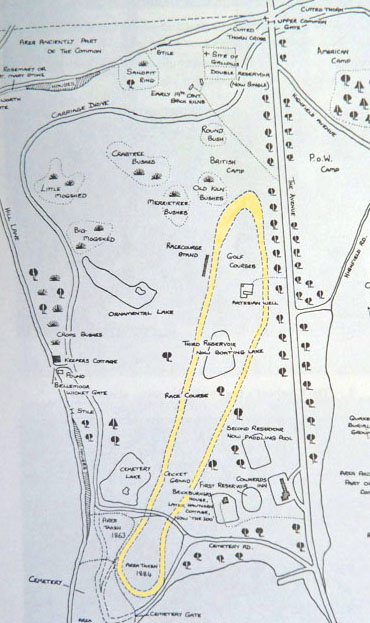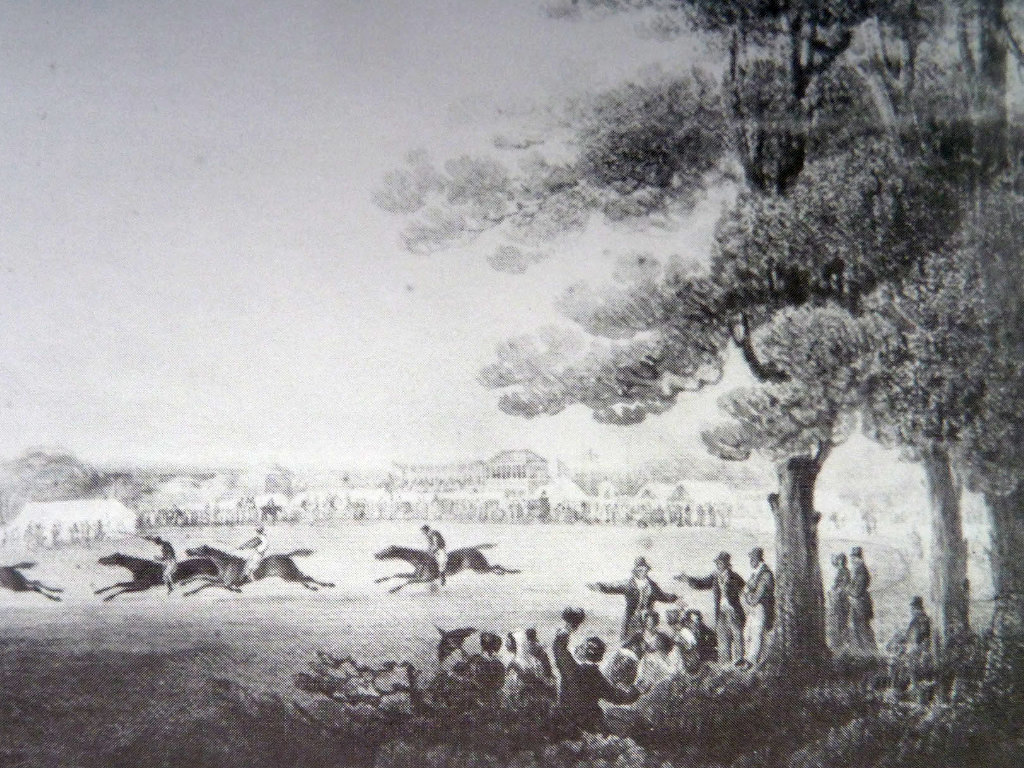Horse Racing on Southampton Common
Horse racing on the Common started in 1822, when Southampton was enjoying a revival as a spa town. It was an annual event spread over two days and planned to attract more visitors to the town. There was a festival atmosphere and a broad range of entertainments both on the Common and in the town.
The programme included bare knuckle prize fighting staged in front of the racing stand, and more genteel entertainments in the town included the opening of the theatre for its season, a ball in the Long Rooms, dinners at the Star and Dolphin Hotels, and a firework display on Houndwell.
Horse racing had been a popular sport in Southampton from 1791, when the nobility and gentry ‘carriage folk’ indulged their love of horses and betting with organised meetings at Shirley, Stoneham, and Netley Common. However, by the early 1800s Southampton was losing its kudos, not least because the Prince Regent favoured Brighton, and so for a while horse racing lapsed in the town
The new course on the Common was one and three quarters miles around and included within its circuit both the boating lake and artesian well. It looped through the southern part of the Common, but this section was shortened after the mid-1840s, when it was turned into Hill Lane cemetery. The race stand, lined with green baize, was placed near the north turn on the west side of the course facing east.
During the late 1830s the coming of the railway, and development of the docks, changed the atmosphere in Southampton from genteel to industrial. And after 1837 it became increasingly difficult to raise enough subscriptions to employ a steward of sufficient social standing to attract gentlemen of quality. Racecourse debts and expenses grew, and in 1848 the committee had little choice but to sell off the posts, stands, and rails. Although, as it turned out, this lapse was only temporary.
Horse racing was becoming more popular throughout the country. Better transport links, a burgeoning population, and newspaper coverage resulted in millions of people watching the sport each year. Southampton’s population was rapidly expanding beyond its Old Wall into new working-class suburbs of St Marys and Chapel.
As a result, horse racing was revived on the Common in 1859 with enthusiastic support from the Mayor Fred Perkins, and a local magnate Thomas Chamberlayne, who was the leading country gentleman living near the town. There were two or three golden years.
The races were attended by a wide spectrum of society. The gentry arrived in their fine carriages. Well to do farmers sporting white top hats came with farm wagons filled with excited country folk dressed in their Sunday best. Southampton’s working classes were conveyed from the Six Dials in St Mary’s for 3 pence per head.

The new course on the Common was one and three quarters miles around and included within its circuit both the boating lake and artesian well. It looped through the southern part of the Common
By the mid-1860s storm clouds were brewing with newspaper reports expressing disappointment with both the attendance and the quality of the entries. Decline set in again, and within ten years there was a conspicuous absence of gentleman’s carriages.
There was increase in disorder, rowdyism, drunkenness, and crime. Eventually, the Rector of St Mary’s Church, Basil Wilberforce, grandson of the famous anti-slavery campaigner, began a successful campaign against the races. The last race was in 1882.
Reference Books:
Rance, Adrian (1986) Southampton History
Stovold, Jan (1984) Bygone Southampton
Temple Patterson, A (1966) A History of Southampton 1700- 1914
Hampsire Chronicle
Southampton Common (1979) Published by City of Southampton Society
Image: Riders on the Common, by T.G. Hart

